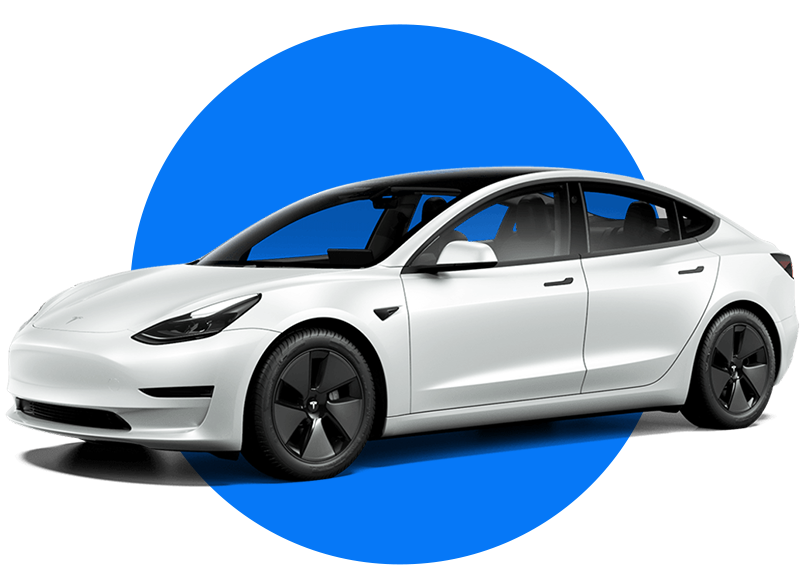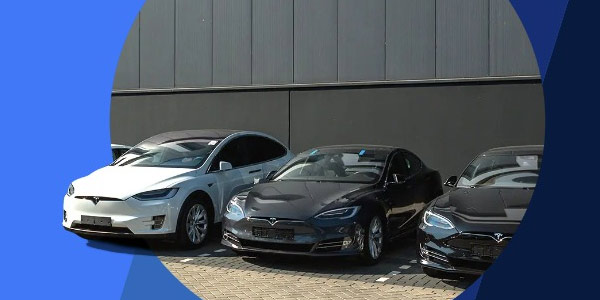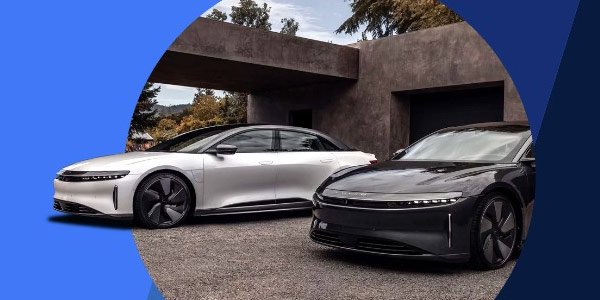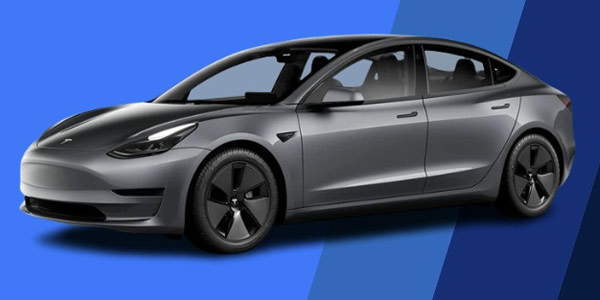Texas Fleet Management Services & Solutions
The Future of Mobility
Austin has declared its commitment to sustainability and alternative fuel options by aiming to have 40% of its vehicles be electric by 2030.
And there is no better time. Starting January 2024, 50% of local authorities’ new vehicles must be zero emission. By January 2027, that number rises to 100%.
The upcoming transition is daunting for many fleet managers with high-mileage business needs. But with Spring Free EV’s comprehensive fleet service package, the transition to electric commercial vehicles is seamless and stress-free for businesses of all sizes.

Why Spring Free EV is the Top Choice for Texas Fleet Services?
Tired of your heavy-duty trucks needing regular repair services? Looking to have better telematics and diagnostics to track fuel consumption, optimize routes, and increase customer satisfaction? Interested in leading the way as more and more businesses go green?
Spring Free EV is the top choice for Texas fleet services, as we offer unique advantages that cater to the needs of the businesses in the region. Here’s why:
Designed for High Mileage Usage in Texas
Spring Free EV’s fleet leasing solutions are crafted to meet the demands of high-mileage fleets, including taxi services, car rentals, state agencies, and company vehicles in Texas.
-
1. Flexible leasing terms
Spring Free EV offers flexible leasing terms and competitive rates tailored for fleet vehicles' extensive use.
-
2. Electric vehicles
We provide access to a wide range of electric vehicles suitable for heavy-duty usage, as well as preventative maintenance plans and charging infrastructure support.
-
3. Sustainable approach
Spring Free EV’s sustainable approach aligns with Texas's growing emphasis on eco-friendly transportation
Electric Vehicle Fleet Programs
Integrating EV vehicles into commercial fleets enhances operational efficiency and sustainability. Yet, fleet managers are deterred by high initial costs. Not so when you partner with Spring Free EV.
What Our Customers Say
"After we completed our due diligence, we saw ourselves aligning with Spring Free as a real partner from now and in the future."
Jerome Mends-Cole,
SacTesla

"It's basically just sign an agreement and the car is delivered as soon as it's available."
Jaren Skinner,
ISLAND RIDES

Significant Cost Savings with Electric Vehicles
By partnering with Spring Free EV, businesses can significantly reduce their costs. Many companies, including Hertz, have saved up to 60% in maintenance costs in the transition to electric fleets. This is because EVs require less maintenance services, have fewer moving parts, and are more energy-efficient overall.
Beyond the inherent value of EVs, Spring Free EV’s fleet financing options make electric vehicle fleets even more viable. Spring Free EV offers low down payments and flexible lease terms. We also partner with businesses to take advantage of all of Texas’s current incentives and rebates.
Embrace the Future of Mobility in Texas
The future of mobility in Texas is green, and the time for adoption is now. By partnering with Spring Free EV, Texas businesses will gain the following:
Spring Free EV offers a wide range of electric vehicles, including Tesla and Chevy Bolts. This ensures that businesses have access to some of the best EVs on the market and have a range of options that fit their specific needs and preferences.
Spring Free EV provides a range of fleet management solutions, including vehicle procurement, charging infrastructure installation, maintenance and repair services with experienced technicians, and fleet management software. This comprehensive package simplifies the transition to electric vehicles and helps businesses optimize their fleet operations.
Spring Free EV’s fleet services are designed to be scalable, allowing businesses to start with a small number of electric vehicles and gradually expand their fleet as business needs change. You might start with a handful of service trucks, only to realize you need significantly more as demand increases. This flexibility is essential in a dynamic market like Texas, where companies may experience fluctuations in demand.
Spring Free EV’s mission is to promote the adoption of electric vehicles and reduce carbon emissions. As Texas continues to lead the nation toward sustainability, Spring Free EV is the perfect partner for fleet managers and owners.
FAQ
Unlike traditional leases, we are specifically for commercial use, have lower upfront costs, and are best suited for high mileage driving.
Our base monthly price includes 1,800 – 2,000 miles per month, depending on the vehicle. Once the included miles are reached we charge $0.08-$0.31 per mile.
Our vehicles can not be used as a personal vehicle. At this time we only offer commercial leases which require a business license to qualify.
Electric vehicles (EVs) cut maintenance costs by having fewer moving parts, simplified maintenance routines (e.g. no oil changes), longer-lasting brakes, improved battery technology for longer lifespan, and utilizing remote monitoring for proactive maintenance. These factors lead to significantly reduced maintenance expenses compared to traditional vehicles.
Companies like Hertz estimate that they save 50-60% on maintenance by switching to electric vehicles. This in turn allows them to increase their profit margins.
On average, it costs $10-$30 to go from empty to full, depending on the kind of charger used. That cost is even lower if you’re able to charge at home – dropping down to $6 on average.
For comparison, it costs gas vehicles $46-$57 on average to fill up.
We’re a seasoned group of entrepreneurs with rich backgrounds in mobility (Tesla, Sidecar, Getaround, Revel), renewable energy finance (Sunrun, Mosaic), and structured finance (Morgan Stanley, Rabobank).
Our investors include Reid Hoffman (co-founder of LinkedIn), Ev Williams (founder of Twitter), Stephen DeBerry (founder of Bronze VC) and Spring Lane Capital.
Serving Top Texas Locations
Spring Free EV has established a robust presence across key areas in Texas, extending its services to major hubs such as Dallas, Austin, Houston, and San Antonio. Whether you need on-site roadside assistance, auto repair services, or overall fleet maintenance, Spring Free EV’s is on the ground and ready to help.
Our strategic footprint within Texas’s bustling cities and technology epicenters ensures we are well-placed to provide comprehensive fleet services, including tailored leasing solutions, maintenance, and charging infrastructure support, to various industries and businesses. Our strong presence in Texas underscores Spring Free EV’s dedication to driving electric vehicle adoption and sustainability throughout the state.
Join the EV Revolution in Texas with Spring Free EV
Texas, it’s time to embrace the future of mobility with Spring Free EV and make the leap toward more sustainable and cost-effective commercial fleets. Take advantage of the opportunity to drive positive change for your business and the environment. Contact Spring Free EV now and join the electric vehicle revolution in Texas!
How you save with Spring Free EV
Total Cost of Ownership (TCO)
|
Traditional lease
BMW 330i
 |
Spring Free EV
Tesla Model 3
 |
| Total Upfront costs1 | $4,255 | $1,250 |
| Effective monthly payment (Lease payment, overage, down payment) | $1,312 | $1,244 |
| Est. Fuel / Charging cost2 | $444 | $234 |
| Maintenance3 | $375 | $225 |
| Monthly TCO | $2,131 | $1,703 |
| Monthly savings with Spring Free EV | $428 | |
| Yearly Savings with Spring Free EV | $5,132 | |
[1] Manufacturer advertised down payment on May 2023. Actual rate may vary.
[2] Advertised lease payment for southern California, May 2023. Actual rate may vary.
[3] Overage rate is $0.25 per mile over 1,250 (the average monthly mileage for a 15,000 mile per year lease)
[4] Fuel estimate for BMW 330i is based on 30 combined MPG and $3.55 gas/gallon. Charging estimate for Tesla Model 3 are based on 4.0 mi/kWh and $0.25 charging costs. Actual rates may vary.
[5] Average maintenance cost for a gas vehicle is $0.10 per mile. Average cost maintenance cost for EVs is $0.06 per mile
How Spring Free EV is different
No mileage cap
Leases come with 1,800+ miles/mo. Beyond that, pay only 8-16 cents
Path to purchase
Option to buy at end of term — the more miles driven, the lower the buyout price
One-stop supplier
From sedans and SUVs, vans to trucks, we’re your source for electric vehicles
Optimize cash flow
Low upfront costs (including a refundable deposit)
Here to help you scale
Build your business credit with each lease payment
Texas Commercial Fleet Services Guide
How to Affordably Acquire Your Fleet in Texas
Acquiring a commercial fleet in Texas can be a significant investment. But there are strategies to make it more affordable. Here are some tips to help you acquire and expand your fleet:
- Consider Used Vehicles:
Look for well-maintained used commercial vehicles that fit your business needs. Ensure the vehicles have a detailed maintenance history and do your due diligence of inspection before purchasing. - Explore leasing options:
Leasing vehicles with vendors like Spring Free EV allows you to side step the high upfront costs of purchasing. Leasing often includes maintenance packages and other benefits that further reduce ongoing expenses. - Go Green:
One of the best ways to cut costs is to use electric vehicles, which inherently have lower operating costs and fuel costs. Even more, you can take advantage of significant incentives and tax savings in Texas when you electrify your fleet.
Financing Your Fleet Expansion in Texas
- Tips for Overcoming Small Fleet Loan Challenges
- Focuses on financial solutions available in Texas for businesses looking to expand their fleet beyond a few vehicles.
Tips to Minimizing Fleet Acquisition Risks in Texas
You’ve dreamed about growing your fleet. The market is ready, and your business is growing. But you can’t get the financing you need to acquire more vehicles.
This, unfortunately, is the experience of many small and growing commercial fleets. Here are some of the most common challenges for fleets in Texas with tips for how to overcome them:
- Challenge #1: Credit History
Securing financing can be tricky for small businesses with limited or poor credit history. Local and national banks, understandably, want to ensure they are backing a stable business. But it can often feel like an insurmountable barrier to entry for fleet owners.
Pro Tip: Spring Free EV evaluates businesses based on their overall health, not their credit score. That means many fleets excluded from traditional financing options are approved for loans when working with Spring Free EV - Challenge #2: Down Payment Requirements
For many small businesses, providing the required down payment to secure a loan is challenging. When starting out, you often don’t have excess cash, especially in a market like Texas. Putting forward a down payment can feel impossible.
Pro Tip: Negotiating down payment terms with lenders is always an option. Many will work with you to determine a solution for your financial capacity. Acquire new vehicles today! - Challenge #3: Collateral Requirements
Traditional lenders require collateral to secure the loan. Yet, many small businesses’ assets are limited, making providing sufficient collateral incredibly challenging.
Pro Tip: Explore lenders like Spring Free EV that offer unsecured loans or are flexible with collateral requirements. You can also improve your business’s overall asset position to increase collateral options. - Challenge #4: Regulatory Compliance
Businesses must comply with state and local regulations in Texas. Failure to do so will impact loan approval.
Pro Tip: Stay informed about Texas industry regulations and ensure compliance. Zero-emission vehicles are becoming increasingly important in Texas’s regulation. Stay ahead of the curve and electrify your fleet today with Spring Free EV.
How To Cut Down Fleet Maintenance Costs in Texas
Minimizing fleet acquisition risk is crucial for businesses in Texas. Here are some tips to help mitigate risks associated with acquiring and managing a fleet:
- Tip #1:
Conduct comprehensive research on the types of vehicles needed for your fleet. Consider fuel efficiency, maintenance costs, and suitability for your business needs. Plan for the long term to avoid frequent turnover. - Tip #2:
Develop a realistic budget that includes the acquisition cost and ongoing expenses like maintenance, insurance, and fuel. Conduct a thorough financial analysis to ensure the fleet acquisition aligns with your financial goals. - Tip #3:
Stay informed about Texas’s regulations related to vehicle emissions, safety standards, and other requirements. Ensure your fleet meets all state and local regulations to avoid fines and penalties. - Tip #4:
Consider incorporating electric or hybrid vehicles into your fleet. Texas places a strong emphasis on environmental sustainability. By electrifying your fleet, you can benefit from incentives and align with the state’s environmental goals. - Tip #5:
Implement robust vehicle tracking and management systems to monitor each vehicle’s usage, maintenance, and performance. You can even use advanced technologies such as telematics, IoT devices, and AI-driven analytics. These will give real-time data to inform decision-making and risk-management strategies. - Tip #6:
Build strong relationships with reputable suppliers, dealerships, and service providers. Choose suppliers with a proven track record for reliability, quality, and after-sales support. Work with suppliers that provide flexible leasing options so that you can adjust and grow as your business needs change. - Tip #7:
Establish proactive maintenance programs to ensure that vehicles are well-maintained and compliant with safety standards. Regular inspections and preventive maintenance can reduce the risk of unexpected breakdowns. - Tip #8:
Invest in driver training programs to enhance safety and reduce the risk of accidents. Well-trained drivers are less likely to cause damage to vehicles, minimizing repair costs and potential liabilities. - Tip #9:
Obtain comprehensive insurance coverage for your fleet. Ensure that the coverage includes liability protection, property damage, and coverage for any specialized equipment or cargo being transported. - Tip #10:
Develop contingency plans for unexpected events such as accidents, breakdowns, or changes in regulatory requirements. Having a well-thought-out plan in place can minimize disruptions to fleet operations.
By implementing these tips, businesses in Texas can enhance their ability to acquire fleets and minimize associated risks. Regular monitoring, compliance checks, and adapting to changing regulations will contribute to the long-term success of your fleet.
Navigating Fleet Legislation in Texas
Texas is working to create a greener and cleaner world. It has a robust slate of fleet legislation that all fleet managers should be aware of.
- Vehicle Inspection Requirements:
Texas has vehicle inspection requirements to ensure the safety and emissions compliance of vehicles. Fleet operators should adhere to state regulations regarding regular vehicle inspections. - Weight Limits and Restrictions:
Texas imposes weight limits on commercial vehicles. Fleet operators need to be aware of these limits and ensure compliance to avoid fines or penalties. - Commercial Driver’s License (CDL) Requirements:
Fleet operators in Texas must comply with state CDL requirements for drivers operating commercial vehicles. This includes proper licensing and adherence to federal regulations. - Idling Restrictions:
Local jurisdictions in Texas have regulations limiting the idling time of commercial vehicles to reduce air pollution and conserve fuel. - Reporting and Record-Keeping:
Fleet operators are required tosubmit records related to vehicle maintenance, inspections, and driver logs. Compliance with reporting and record-keeping requirements is essential. - Safety Regulations:
Texas enforces safety regulations for commercial vehicles, including requirements for equipment, lighting, and adherence to safety standards. Fleet operators should stay informed about safety regulations to ensure compliance. - Insurance Requirements:
Fleet operators in Texas are required to meet minimum insurance coverage requirements for their commercial vehicles. Compliance with insurance regulations is crucial for legal operation. - Distracted Driving Regulations:
Texas has laws regulatingdistracted driving, including the use of mobile phones while driving. Fleet operators should enforce policies to prevent distracted driving among their drivers. - Fuel Tax Reporting:
Texas imposesfuel taxes, and fleet operators are required to report and pay these taxes. - Use of Electronic Logging Devices (ELDs):
Federal regulations mandate the use of ELDs for tracking hours of service for commercial drivers. Fleet operators in Texas need to ensure compliance with these regulations. - Licensing and Registration:
Fleet operators must ensure that their vehicles are properly licensed and registered with the Texas Department of Motor Vehicles (TxDMV).
It is critical for fleet operators in Texas to stay informed about updates and changes to legislation, especially regarding emissions standards, alternative fuels, and vehicle safety. Regularly checking with relevant state agencies such as the Texas Department of Public Safety (DPS), the TxDMV, and the Texas Commission on Environmental Quality (TCEQ) keeps you up-to-date and ensures compliance.
Texas is working to reduce greenhouse gas and improve sustainability. Stay ahead of the curve by easily and affordably financing a fleet of electric vehicles with Spring Free EV.
- How to Affordably Acquire Your Fleet in Texas
- 1. Consider Used Vehicles
- 2. Explore leasing options
- 3. Go Green
- Financing Your Fleet Expansion in Texas
- Tips to Minimizing Fleet Acquisition Risks in Texas
- 1. Credit History
- 2. Down Payment Requirements
- 3. Collateral Requirements
- 4. Regulatory Compliance
- How To Cut Down Fleet Maintenance Costs in Texas
- Tip #1
- Tip #2
- Tip #3
- Tip #4
- Tip #5
- Tip #6
- Tip #7
- Tip #8
- Tip #9
- Tip #10
- Navigating Fleet Legislation in Texas
- 1. Vehicle Inspection Requirements
- 2. Weight Limits and Restrictions
- 3. Commercial Driver's License (CDL) Requirements
- 4. Idling Restrictions
- 5. Reporting and Record-Keeping
- 6. Safety Regulations
- 7. Insurance Requirements
- 8. Distracted Driving Regulations
- 9. Fuel Tax Reporting
- 10. Use of Electronic Logging Devices (ELDs)
- 11. Licensing and Registration





